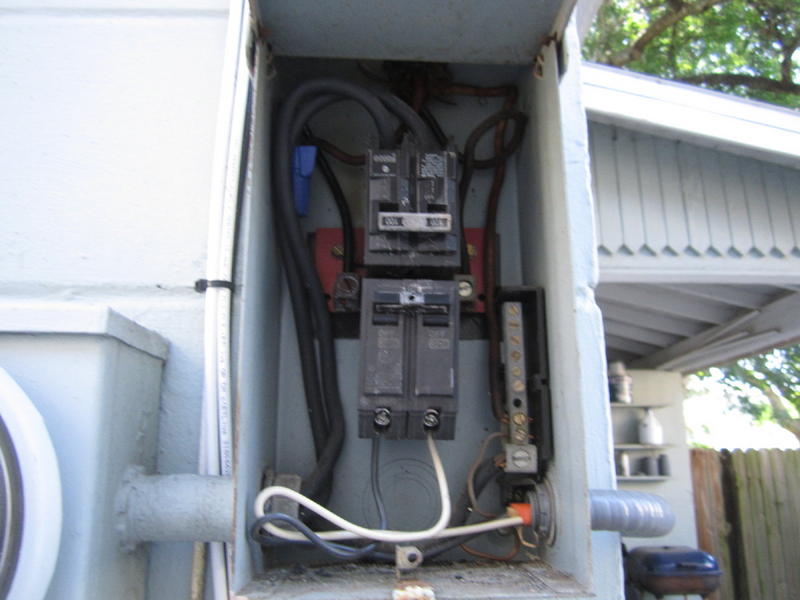Did a duplex today with service panels and subpanels for each unit. The service panels had the service conductors back-feeding the panel board. Is this normal or did they completely get this wrong?:shock:
Back-fed breaker are permitted if they’re held in place by a rivet, screw, clip etc. The orange NM cable in photo #2 is not permitted in that raceway. There are other violations too.
Thanks Robert, I did notice the NM in the conduit. Did you notice besides being backfed, the feeder to the subpanels are connected to the buss bar lugs? That can’t be right…
Robert why is the #10 not permitted? Looks like an a/c disconect flex to me.
NM cable is not permitted in wet locations, the inside of that raceway is considered a wet location according to the NEC.
Actually it could be done that way in a code complaint manner but it would involve following the tap rules in Article 240 since those conductors in the lugs are smaller than the MAIN OCPD.
If you look at this in a linear fashion you have the feed following this path:
SEC’s from meter>back-fed Main OCPD>bus>lugs>subpanel.
If the main is say 100 amps (guessing from the photo) and the conductors attached to the lugs are less than 100 amps then they’re considered tap conductors and the tap rules would apply. That’s because the OCPD of 100 amps exceeds their ampacity.
OK Robert, dumb it down for the rest of us. That flex and #10 is common everyday installation around here. Everyone is doing it. ![]() Are you saying the flex is considered a wet location?
Are you saying the flex is considered a wet location?
The subpanels were also 100A. Couldn’t get a size on the feeders, but they do look small. Would these panels be considered a hazard? I know they are wired backwards, but is this really a major concern? Never have seen this before…
Well I’ll be a monkeys butt. Just looked that one up. Its obviously not enforced here, since everything to a/c comps is standard nm wire.
Yes the inside of that raceway is a wet location and the conductors within that raceway must be rated for wet locations such as THWN or XHHW. NM is a dry location wiring method and not permitted in wet locations. Although this may be a common installation it’s a direct violation of the NEC.
The conductors feeding the subpanel need to be sized according to the OCPD feeding the lugs that they’re connected to (in this case the main CB). If they’re smaller than that OCPD then you have a violation unless the tap rules are met.
Thanks Robert that is good info and although we do not have that problem we do from time to time find BX or armor cable inside protected PVC.
These advantages make armored cable very useful. However, as with any wiring method, there are some locations where it can’t be used. It must not be installed [320.12]:
-
If subject to physical damage. -
In **damp or wet locations**. -
In air voids of masonry block or tile walls where such walls are exposed or subject to excessive moisture. -
Where exposed to corrosive conditions. Previous NEC editions used the word “enclosure” to describe armored cable jackets, but the Art. 100 definition says an enclosure is a case or housing of an apparatus, or fence or wall surrounding an installation. Obviously, no jacket of any cable is an “enclosure.” Therefore, the 2011 revision dropped this misuse — now referring to a “flexible interlocked metal armor.” A new restriction appears in the 2011 NEC: You can’t use Type AC where exposed to corrosive fumes and vapors. Why was this added? Such exposure was already a violation of 300.6. The problem is that the restriction didn’t appear in Art. 320. A general rule regarding this type of protection is in 300.6. With the 2011 revision, this requirement is included in Art. 320 for Type AC requirements so it is not as likely to be overlooked.
Robert
Talked with an hvac pal of mine today about the nm and conduit. He said thats correct, but nobody is worried about it here. Its not enforced, and everyone still uses nm, even in new construction. It has not become a real priority here.
No AHJ enforcement = no worries.
Every area has its learning curve.

